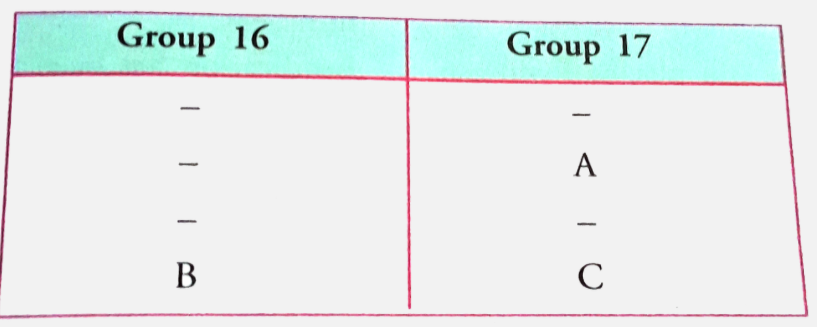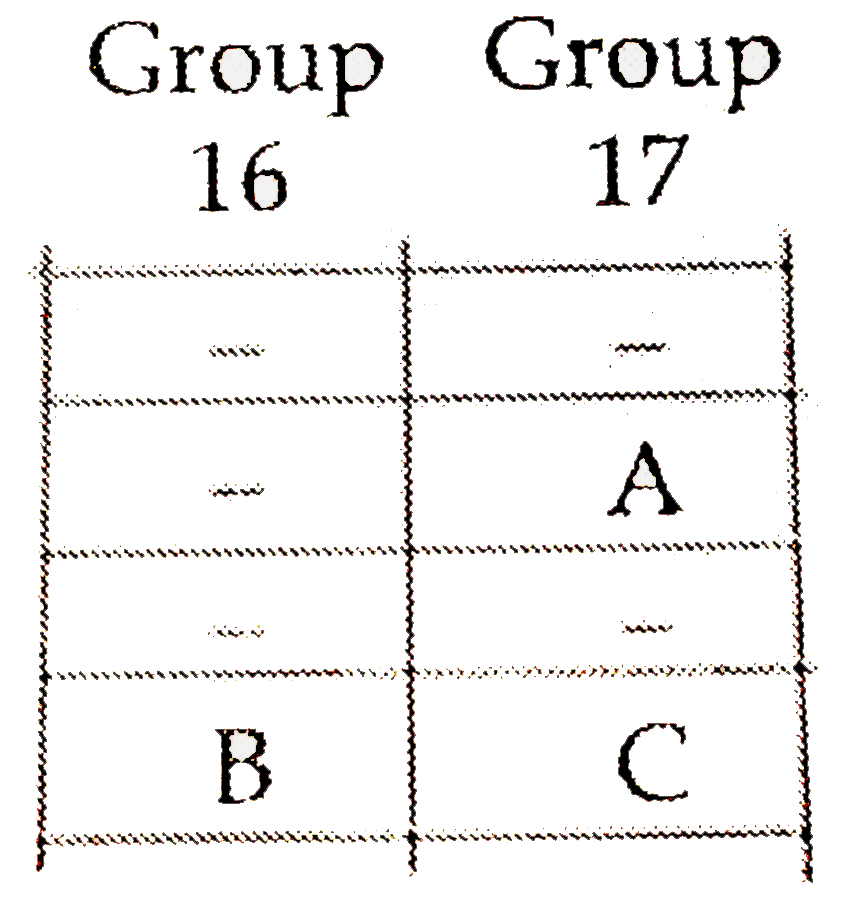The positions of three elements A, B and C in the periodic table are shown below:
Group 16Group 17−−−A−−BC
State whether A is metal or non-metal.
To determine whether element A is a metal or a non-metal based on its position in the periodic table, we can follow these steps:
1. Identify the Groups: The question states that element A is located in Group 17 of the periodic table.
2. Understand Group Characteristics: Group 17 is known as the halogens. The elements in this group include fluorine (F), chlorine (Cl), bromine (Br), iodine (I), and astatine (At). All of these elements are classified as non-metals.
3. Determine the Nature of Element A: Since element A is in Group 17, which is predominantly composed of non-metals, we can conclude that element A is also a non-metal.
4. Conclusion: Therefore, based on its position in Group 17, we state that element A is a non-metal.
Final Answer:
Element A is a non-metal.
---
Element A is a non-metal.
Topper's Solved these Questions
- BOOK - MTG IIT JEE FOUNDATIONCHAPTER - PERIODIC CLASSIFICATION OF ELEMENTSEXERCISE - Exercise (Multiple Choice Questions Level-1)30videos
PERIODIC CLASSIFICATION OF ELEMENTS
- BOOK - MTG IIT JEE FOUNDATIONCHAPTER - PERIODIC CLASSIFICATION OF ELEMENTSEXERCISE - Exercise (Multiple Choice Questions Level-2)20videos
PERIODIC CLASSIFICATION OF ELEMENTS
- BOOK - MTG IIT JEE FOUNDATIONCHAPTER - PERIODIC CLASSIFICATION OF ELEMENTSEXERCISE - Solved Examples37videos
PERIODIC CLASSIFICATION OF ELEMENTS
- BOOK - MTG IIT JEE FOUNDATIONCHAPTER - MOLE CONCEPT, STOICHIOMETRY AND BEHAVIOUR OF GASES EXERCISE - EXERCISE (INTEGER/NUMERICAL VALUE TYPE)5videos
MOLE CONCEPT, STOICHIOMETRY AND BEHAVIOUR OF GASES
Similar Questions
The position of three elements A, B and C in the Periodic Table are shown below :
Group 16Group 17−−−A−−BC
(a) State whether A is a metal or non-metal.
(b) State whether C is more reactive or less reactive than A.
(c) Will C be larger or smaller in size than B?
(d) Which type of ion, cation or anion, will be formed by element A ?View SolutionThe positions of three elements A, B and C in the periodic table are shown below:
Group 16Group 17−−−A−−BC
State whether C is more reactive or less reactive than A.View Solution
Knowledge Check
- Question 1 - Select One
Elements of group 17 of the periodic table are called
Aalkali metalsBrare elementsChalogensDtransition metals
The position of three elements A, B and C in the Periodic Table are shown below –
Group16Group17−−−A−−BC
(a) State whether A is a metal or non-metal.
(b) State whether C is more reactive or less reactive than A.
(c) Will C be larger or smaller in size than B?
(d) Which type of ion, cation or anion, will be formed by element A?View SolutionThe positions of three elements A, B and C in the periodic table are shown below:
Group 16Group 17−−−A−−BC
Will C be larger or smaller in size than B?View SolutionThe positions of three elements A, B and C in the periodic table are shown below:
Group 16Group 17−−−A−−BC
Which type of ion, cation or anion will be formed by the element A?View SolutionThe position of three elements A, B and C in che periodic table are shown below :

(a) State whether A is metal or non-metal.
(b) Seate whether C is more reactive or less reactive than A.
(c) Will C be larger or smaller in size than B ?
(d) Which type of ion, cation or anion will be formed by the element A ?View SolutionThe position of three elements A, B and C in the Periodic table are shown below :

Will C be larger or smaller in size than B?View SolutionThe position of three elements A, B and C in the Periodic Table are shown below:

(a) State whether A is a metal or a non-metal.
(b) State whether C is more reactive or less reactive than A.
(c) Will C be larger or smaller in size than B?
(d) Which type of ion-cation or anion will be formed by element A?View SolutionThe positions of three elements A,B and C in the periodic table are shown here
(a) State whether A is a metal or non-metal?

State whether C is more reactive or less reactive than A
(c) Will C be larger or smaller in size than B?
(d) Which type of ion, cation or anion, will be formed by element A?View Solution

